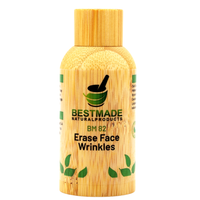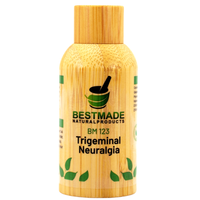
What is Ankylosing Spondylitis?
Have you ever heard about this disease? The name sounds weird, but you have probably encountered a person with this disease sometime in your life.
BM139 may help your body deal with issues related to rheumatoid arthritis, including inflammation of the joints.
Ankylosing spondylitis is a rare form of arthritis. It causes inflammation in the ligaments and joints of the spine, causing stiffness and pain. It often starts in the early 20s and affects men primarily. Years of suffering and, in severe cases, the spine curves forward and may stay hunched.
There is no cure for this disease, but you can slow the progression with proper treatment, medications, and exercise.
Symptoms
The first and most common symptom of AS is pain and stiffness in the lower back. The symptoms progress to other parts of the spine over time. Typically, the pain worsens during the night and the periods of inactivity and often goes away after exercise and moving.
Other possible symptoms are:
- Inflammation in other joints, causing pain and stiffness of the knees, feet, shoulders, or ribs
- Pain and swelling of fingers
- Severe fatigue that does not get better with rest or sleep
- Chest pain, making it difficult to breathe deeply
- Apettite and weight loss
- Vision problems due to eye inflammation
- Anemia
- Skin rash
- Bowel problems
- Depression and anxiety
The symptoms vary between people and develop gradually over the years. Some people get better over time, while others get worse with almost no remission periods.
The time between the first symptoms and the diagnosis can take up to 9 years, on average.

Causes and risk factors of AS
The exact cause of the disease is still unknown. But in many cases (9 out of 10 people with AS) carry a particular gene. However, some people with that gene do not develop the disease; AS may be a hereditary health problem.
Environmental factors also play a role in the development of ankylosing spondylitis.
Men are more likely to get AS; it occurs in every 2-3 men for every woman with AS. Women tend to get the milder form of the disease.
AS starts in the late teens, with 10-20% before 16 years old, and about 80% of people get symptoms before 30 years old.
There is an Increased risk of developing AS for people who have tested positive for the HLA-B27 gene marker, people with frequent gastrointestinal tract infections, and people who smoke.
AS diagnosis
In the early stages, AS symptoms may be similar to common back problems. This disease can be challenging to diagnose since it develops slowly over time, and there are no definitive tests to confirm the diagnosis.
Diagnosis starts with your medical history and physical exam. Doctors will test the range of motion of your spine by asking you to bend and move in different directions. You might be asked to breathe deeply to see if you have chest stiffness. The doctor may examine your joints to see if they are painful or swollen.
Blood tests are done to determine if there is inflammation in your body. Up to 70% of people with AS have high sedimentation rates. Doctors may require genetic testing to check for the HLA-B27 gene.

Doctors may also do imaging tests like X-rays and MRIs to check for bone and joint changes.
Your medical history will involve questions about the severity of the pain you are experiencing, what time of day it hurts the most, what eases the pain, and if you are feeling excessive tiredness.
All these test options may lead rheumatologists to the AS diagnosis.
AS treatment
Medications usually prescribed as AS treatment are:
- NSAID and painkillers- the first choice are drugs like paracetamol, ibuprofen, and indomethacin. These drugs help most people with AS, ease the pain and relieve swelling in the joints. Doctors will try to find the one that works best at the lowest dose possible. The common side effects are gastrointestinal bleeding and ulcers, kidney damage, high blood pressure, increased risk of heart attack and stroke, nausea, headache, vomiting, etc.
- Biologic medications- reduce inflammation and swelling by targeting specific immune messages. These drugs are given as an injection and are unsuitable for every patient. Some of the biologics prescribed for AS are adalimumab, etanercept, golimumab, interleukin, etc. The side effect of these drugs that concerns doctors the most is increasing the risk of developing severe infections. The treatment will be stopped if it does not work within three months.
- Corticosteroids- can be used as a short-term treatment. They can be injected directly into the joint or the muscle. These injections are limited to three a year, with at least three months between injections. They can cause severe long-term side effects, including low infection resistance, appetite problems, nervousness, dizziness, skin problems, sweating, high blood sugar, etc.
- DMARDs- (disease-modifying antirheumatic drugs), like sulfasalazine, are prescribed to decrease inflammation of joints other than the spine. The most common side effects are stomach pain, dizziness, heartburn, cough, diarrhea, etc.
Exercise and physiotherapy are essential parts of the treatment. Being active can improve your spinal movement and prevent stiffness and pain. The physiotherapist will plan exercises for the spine, shoulders, and hips. Hydrotherapy, swimming in warm water, also has excellent results.
BIO24 may provide energy and help you cope with stress. Supports your body's ability to manage, absorb, and use nutrients while boosting your physical health and immune system. It is a useful remedy to keep you alert, fresh, and stress-free all day.
Most people with AS don't need surgery. Sometimes it is done when the joints are badly affected. They include joint replacements, joint repairs (hips or knee), and occasionally fracture repairs, spine corrections, or straightening.
Home remedies and lifestyle changes
1. The first and most important one is to stay active. Regular exercise each day will improve your movement range, ease morning stiffness, and help with posture. Start slowly and gradually increase the number of activities you do.

2. Swimming is one of the best options. It uses almost all the muscles and joints without putting pressure on them since the water holds your body's weight. Swimming is excellent for overall health, strength, and flexibility.
3. Complementary medicines like acupuncture, yoga, tai chi, pilates, etc., may considerably manage symptoms of AS. People who do yoga for six months reported significantly less pain and disability. It is advised to start yoga with a trained practitioner to avoid injuries, although yoga is considered safe for most patients. Acupuncture is mainly used to treat pain. Sessions last 30-60 minutes and can be done weekly or monthly. Most people feel better after a few acupuncture sessions.
4. Quit smoking. Smoking affects the heart and lungs, making problems worse. It could also diminish the medical treatment effects. Quitting smoking is challenging and complex, but with persistence and determination, everyone can stop smoking. You can ask your doctor or pharmacist for help if you are struggling.
5. Change your diet and maintain a healthy weight. Eat food rich in calcium (dairy products, seafood, leafy greens, legumes) and get enough vitamin D (from the sun or as a supplement) to keep your bones healthy.
6. Try as much as possible to keep a good posture (the way you hold your body). Keep your chin up and your shoulders back. Ensure you sit correctly and that your physiotherapist approves your chairs at home and work. Use a cushion behind your lower back to give extra support, and try to keep all things close to the hand, so you don't have to bend over or stretch to get the stuff you need. Stretch every time you have the opportunity.
7. Have a good night's sleep. Keep your room and bedding clean, avoid energy drinks in the evening, do not watch screens before you go to bed, and try going to sleep and waking up at the same time every day. You can get an anatomical pillow, avoid eating two hours before bed, try not to sleep during the day, have a warm bath before sleeping, etc.

8. If you have a physically demanding job, change your working environment.
9. Avoid stress. Too much stress can worsen AS symptoms, especially pain. There are dozens of stress-managing techniques; you must find one that suits you the most. You can try biofeedback, meditation, breathing techniques, avoid triggers, get social support, etc.
10. Apply eucalyptus oil on the swollen joint. It is used to decrease pain. Cold packs reduce inflammation.
11. Add curcumin to your diet. It is a potent anti-inflammatory agent. Cod liver oil eases the pain and increases mobility.
12. Body massage is a great way to relax. Affected joints can be rubbed with rosemary, thyme, or ginger oils to alleviate pain and decrease inflammation.
AS complications
The fusing of the bones in the spine can make it difficult to move your back. That way, a person stays in one position. Fused bones are at a greater risk of fractures, and fractured spine bones can damage the nerves. Some patients with AS develop osteoporosis, a condition where the bones lose their strength, get thinner, and can fracture easily. Joints can be damaged, making it hard to move them, so that that joint replacement surgery might be necessary.
Some patients are at a greater risk of a stroke or a heart attack.
If your vision becomes blurred and you have red, swollen eyes, you may have a condition called iritis. It is advised to see your doctor if you get any vision problems.
Bottom line
Most people with AS diagnosis get to live productive lives. It is vital to stay active and change your lifestyle, habits, and working environment. You can do great with a healthy diet rich in fruit and vegetables and by limiting alcohol, fats, and smoking.
Taking care of your emotional health is as important as regular exercise and diet. Ask for support and help whenever you need it.
And at last, honor and understand your limitations.

Sources: AS, Versus arthritis, Web MD, NHS, Johns Hopkins Medicine, NIH, Mayo Clinic, Bestmade Natural Products, Healthline





Leave a comment